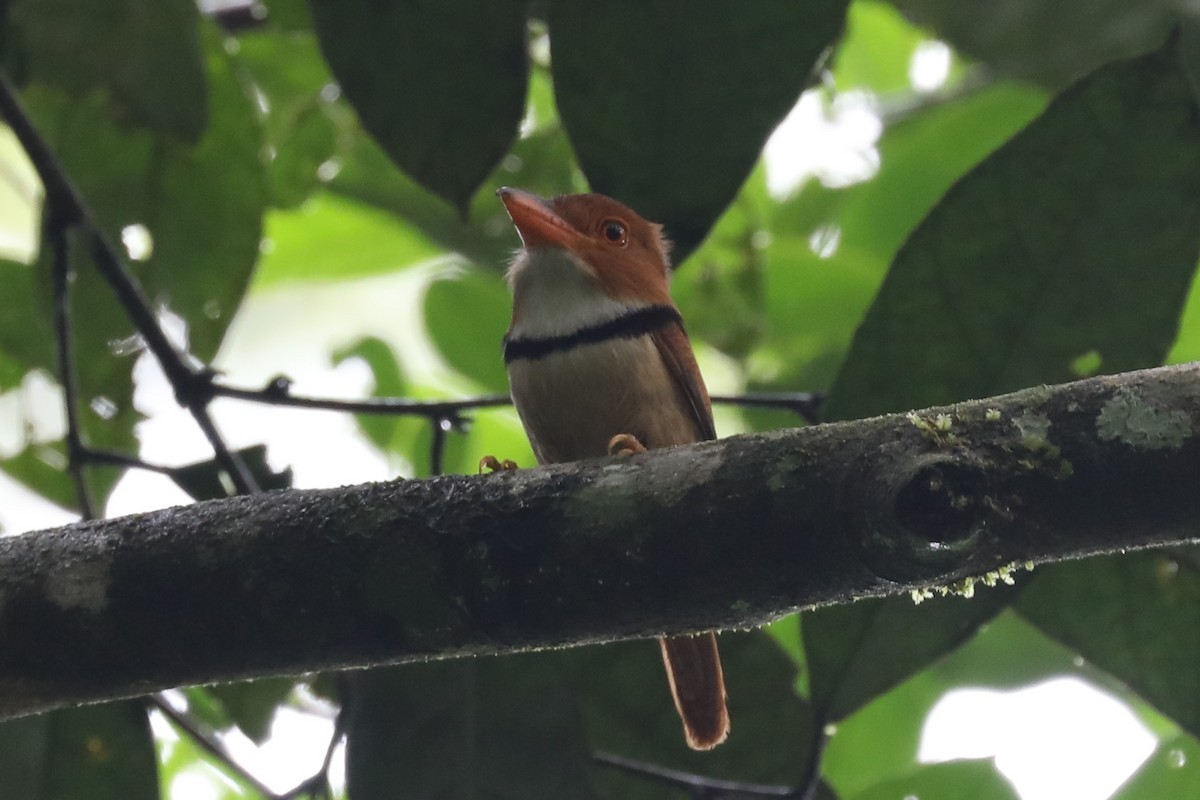Collared Puffbird
A species of Puffbird Scientific name : Bucco capensis Genus : Puffbird
Collared Puffbird, A species of Puffbird
Botanical name: Bucco capensis
Genus: Puffbird
Content
Description General Info
 Photo By Steve McInnis
Photo By Steve McInnis Description
The collared puffbird (Bucco capensis) is bird in the family Bucconidae that is found across the northern region of South America in the Amazon Basin, southern Colombia and Venezuela, and the Guianas. In 1760 the French zoologist Mathurin Jacques Brisson included a description of the collared puffbird in his Ornithologie that was based on a specimen collected in French Guiana. He used the French name Le barbu and the Latin name Bucco. Although Brisson coined Latin names, these do not conform to the binomial system and are not recognised by the International Commission on Zoological Nomenclature. When in 1766 the Swedish naturalist Carl Linnaeus updated his Systema Naturae for the twelfth edition he added 240 species that had been previously described by Brisson. One of these was the collared puffbird. Linnaeus included a terse description, coined the binomial name Bucco capensis and cited Brisson's work. The specific name capensis denotes the Cape of Good Hope where Linnaeus mistakenly believed the birds occurred. The puffbirds are an insectivorous bird family, related to the jacamars but lacking the iridescent colours of that group. The collared puffbird grows to about 21 cm (8.3 in) in length, and prefers to sit and wait for prey, which has earned it nicknames such as "lazy bird" and "sleeper". 
Size
19 cm
Nest Placement
Tree
Feeding Habits
Collared Puffbird primarily consumes lizards, snakes, frogs, and large insects such as beetles and cicadas. It forages both on the forest floor and foliage, often still-hunting from a shaded perch before pouncing. Occasionally, collared Puffbird actively forages in mixed-species flocks or follows army ants.
Habitat
The collared Puffbird typically inhabits the understory and occasionally the middle storey to subcanopy layers of primary humid terra firme forests. It is also found in dry hilly areas, and regions with bamboo growth along riversides, as well as in denser patches of várzea forests in the lower Amazon basin. This species favors areas characterized by dense vegetation in tropical lowland environments.
Dite type
Insectivorous
General Info
Feeding Habits
Bird food type

 Photo By Steve McInnis
Photo By Steve McInnis